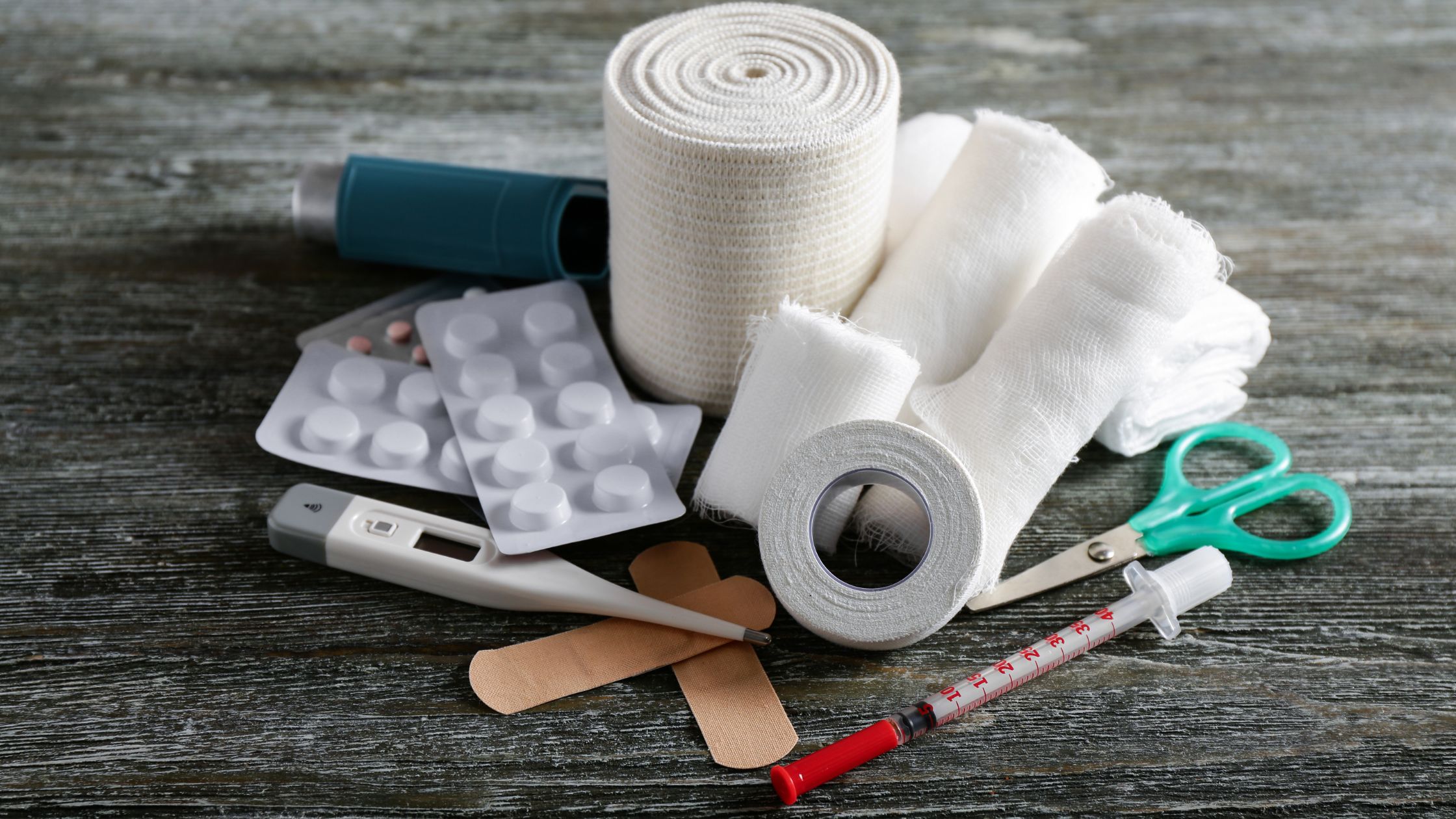Accidents and emergencies can occur unexpectedly, making it crucial to have a well-equipped first-aid kit readily available at home. Whether it’s a minor injury or a more serious situation, having the right supplies on hand can make a significant difference in handling emergencies effectively. Here are twelve essential items that should always be included in your home first-aid kit:
Adhesive Bandages
These are the go-to for minor cuts, scrapes, or blisters. Having various sizes ensures you’re prepared for different wounds.
Gauze and Medical Tape
For larger wounds or to dress a cut that might need extra protection, gauze pads and medical tape are indispensable.
Antiseptic Wipes or Solution
To clean and disinfect wounds, preventing infection. Alcohol wipes or antiseptic solutions like hydrogen peroxide or iodine are essential.
Tweezers
Useful for removing splinters, ticks, or debris from wounds. Sterilize them before use to prevent infection.
Scissors
Having a pair of small, sharp scissors helps in cutting tape, gauze, or clothing to access wounds.
Disposable Gloves
It’s crucial to protect yourself from exposure to bodily fluids or open wounds. Keep a few pairs of latex or non-latex gloves in your kit.
Pain Relievers
Over-the-counter pain medications like acetaminophen or ibuprofen can alleviate minor aches, pains, or fevers.
Thermometer
To monitor body temperature, especially in cases of illness or fever. Digital thermometers are accurate and easy to use.
Antihistamines
Helpful in managing allergic reactions or insect bites. Consider keeping both oral antihistamines and topical creams for different needs.
CPR Mask
In emergencies requiring cardiopulmonary resuscitation (CPR), having a barrier device can protect both the rescuer and the patient.
First-Aid Manual
A comprehensive guide or manual on basic first-aid procedures can be incredibly useful, especially for those without extensive medical knowledge.
Emergency Contact Information
Include a list of emergency numbers, including local hospitals, poison control, and personal emergency contacts.
While these items form the foundation of a basic first-aid kit, it’s important to periodically check and replenish supplies, including a bandage refill. Additionally, consider including items specific to your family’s needs, such as prescription medications, epi-pens for severe allergies, or specific medical supplies recommended by your healthcare provider.
Organization and Maintenance of Your First-Aid Kit:
Store your first-aid supplies in a durable, waterproof container that is easily accessible to everyone in the household. Ensure that family members know where the kit is located and how to use its contents appropriately.
Regularly check the expiration dates of medications and sterile items, replacing them as needed. Also, inspect the contents for any damaged packaging or depleted supplies, and restock accordingly.
When to Seek Professional Help:
While a home first-aid kit can manage many minor injuries, certain situations require immediate medical attention. Seek professional help if:
- The injury is severe, deep, or bleeding heavily and doesn’t stop after applying pressure.
- There’s difficulty breathing or chest pain.
- There are signs of a severe allergic reaction, like swelling, difficulty speaking, or hives.
- There’s loss of consciousness, head injury, or suspected broken bones.
In conclusion, having a well-stocked first-aid kit at home is a proactive approach to handling unexpected emergencies. With the right supplies and knowledge, you can effectively manage minor injuries and provide initial care before seeking professional medical assistance. Regularly maintain and update your kit to ensure it’s always ready to meet your family’s needs.

